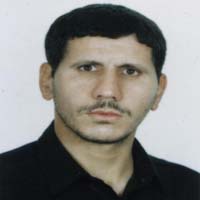Characterization of leachate flow using time lapse ground penetrating radar (GPR) and resistivity survey (case study: geophysical test site of Shahrood University of Technology)
This study investigates the efficiency of different geophysical methods for detecting contaminated zones as well as hidden pipes. There are a number of geophysical techniques that can be useful and beneficial for achieving these purposes. Ground penetrating radar (GPR) and electrical resistivity methods are the most useful approaches for identifying polluted areas and buried features, causing us to utilize such methods in the area. Although GPR and electrical resistivity methods are solely effective for mapping subsurface targets, the integration of these methods might provide us valuable information and valid outcomes. In this paper, electrical resistivity and GPR surveys are conducted and acquired data are modelled to investigate the pollution leakage in the ground. To achieve this aim, a polyethylene pipe with inlet and outlet valves is considered as a tank buried underground in the geophysical test site of Shahrood University of Technology. In the first step of the study, the electrical properties of the empty pipe were measured and modelled using electrical resistivity and GPR methods. In the next step, the pipe was filled by the cupric sulfate solution and electrical measurements were performed again. In addition, the electrical properties were investigated by means of electrical resistivity and GPR methods in another area, sitting on alluvial soil, after and before injecting the cupric sulfate solution. It is worth mentioning that the measurements were performed after drying the surface which was humid due to the injection of cupric sulfate to avoid false conductivity on the ground. The designed profiles include four lines on a buried reservoir and five profiles on alluvial soil. However, the 2D modeling results and interpretation of the acquired data along with two (on the buried target) and three (on alluvial soil) survey lines are just presented in this paper. After collecting and interpreting the electrical resistivity and GPR data in the study area, the results are in the form of two-dimensional models of electrical resistivity and GPR cross sections, which have been obtained by use of RES2DINV and Prism2 softwares, respectively. The obtained results revealed that the electrical resistivity method enjoys a relatively good performance in detailed detection. It is also shown that the GPR method is not able to work properly in alluvial soils with high clay and it suffers from the unsuitability of the transmitter antenna with a frequency of 150 MHz and the destructive effect of moisture on the performance. Regarding the obtained outcomes and using electrical resistivity data, ground details such as polyethylene reservoir, loose and porous soil parts and separation of different areas according to the relative humidity in them have been revealed.
- حق عضویت دریافتی صرف حمایت از نشریات عضو و نگهداری، تکمیل و توسعه مگیران میشود.
- پرداخت حق اشتراک و دانلود مقالات اجازه بازنشر آن در سایر رسانههای چاپی و دیجیتال را به کاربر نمیدهد.




